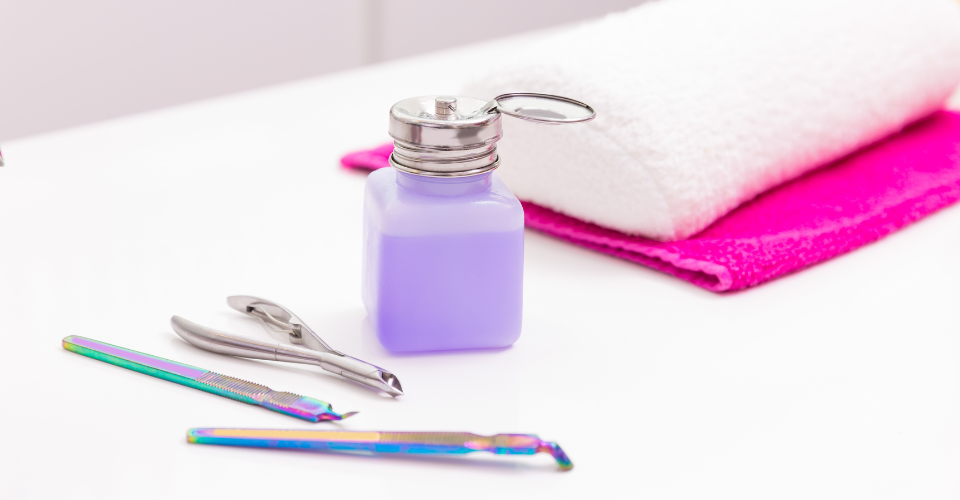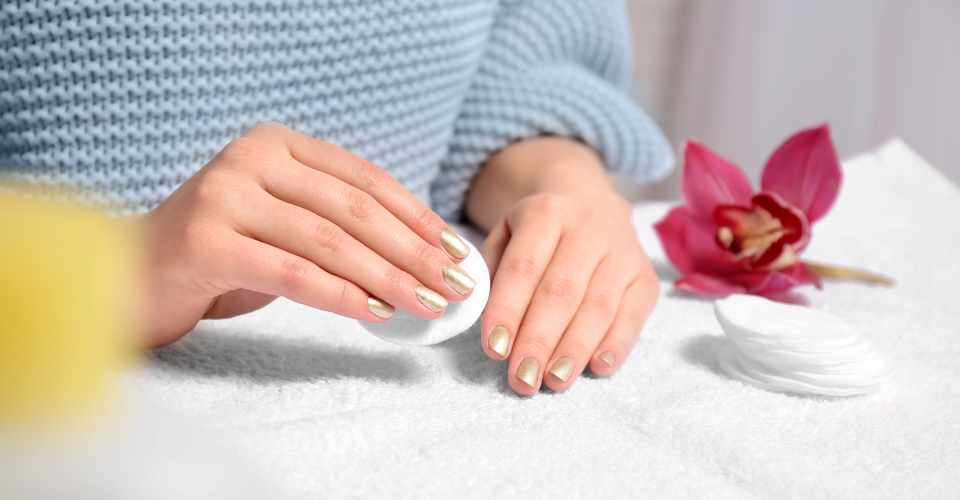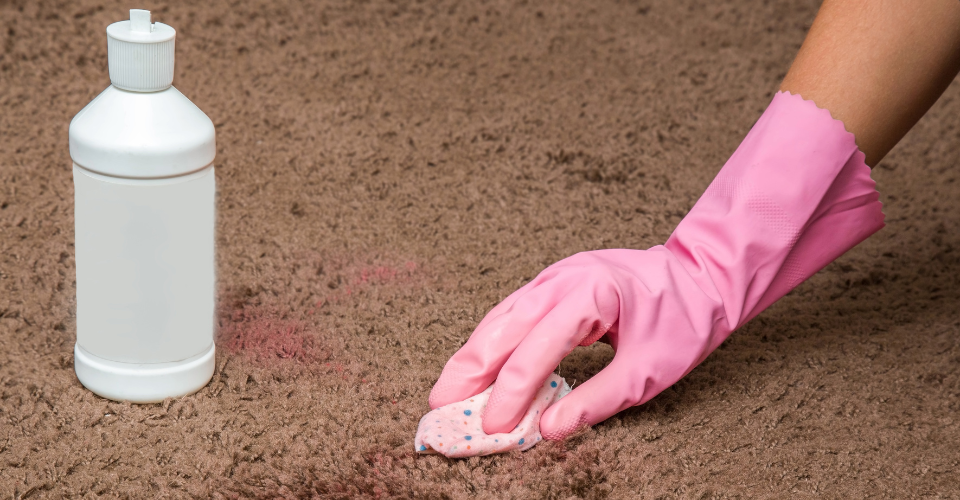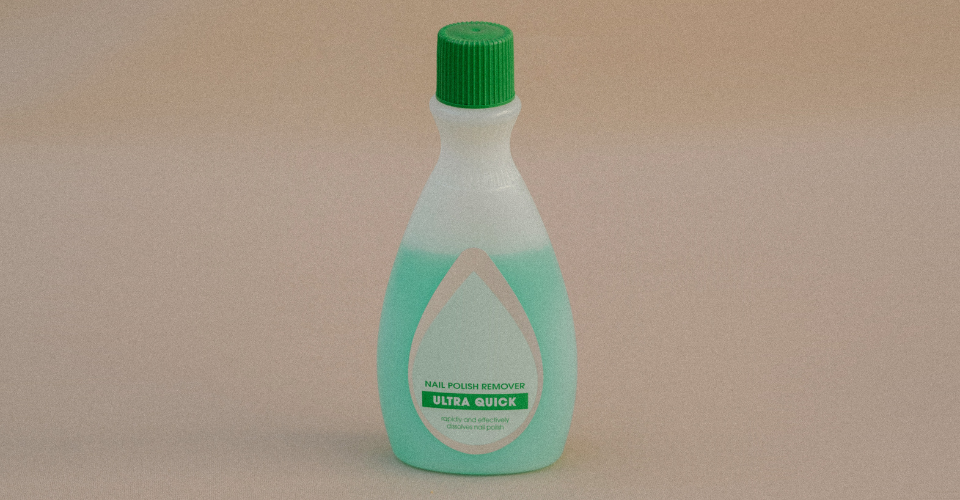How to Dispose of Nail Polish Remover? – Top 9 Helpful Tips
We all enjoy expressing ourselves with vibrant nail colors, from fiery reds to serene blues. And nail polish removers help prepare us for our next nail art adventure. Personally, I had not given much thought to disposing of my nail polish remover until recently. I used to pack them up just in garbage bags and discard them.

Your acetone-soaked cotton balls and acetone nail polish remover have altogether different acetone disposal recommendations. The non-acetone nail polish remover need not be discarded with such stringent measures.
However, acetone is a flammable material and has to be disposed of with safety guidelines. The fire department in your area might have different measures or protocols for the same. I will take you through the eco-friendly tips, and guidelines along with supplies needed for the safe disposal of nail polish removers in this article.
Supplies Needed to Dispose of Nail Polish Remover
No, you cannot discard acetone-used products or touch them with your naked hands. Not only the chemical itself is flammable, it creates fumes that might cause lung issues on long-term exposure.
Here’s what you need to dispose of nail polish remover.
- Latex or rubber gloves.
- N-95 mask.
- Garbage bag.
- Fireproof or a sealed metal container.
If you work in a nail salon or are frequently exposed to acetone, you’ll also need the supplies listed above.
How to Dispose of Nail Polish Remover? – Eco-Friendly Tips and Guidelines!
You must follow acetone disposal best practices to protect yourself from any hazard. I have listed a few tips for your safety while dealing with acetone. These tips involve how to dispose of acetone and acetone disposal recommendations.

This post contains affiliate links. Read our disclosure for more information.
Tip – 1: Work on a hard surface.
You can’t say you have never spilled acetone. If you are applying nail paint on your comfy couch or rug, while the remover lies across the floor or on the couch handle – you are all in for ruining your couch or rug.
The spills on a couch or a rug are hard to remove and eventually, you have to let go of your couch or rug. So, it is advisable to do a manicure on a hard table and a pedicure in a tub. It is easy to clean in case of any spills.
Tip – 2: Wear gloves.
Acetone is a hazardous chemical, and you must not touch it directly with your bare hands. You do not want to be a victim of any hazard, right? It is advisable to use gloves if you are doing someone’s manicure or discarding acetone. You can use rubber gloves if you are allergic to latex.
I personally use these gloves for all my manicure needs. They’re latex-free, which is a plus point, and they’ve proven to be the best choice for any manicure-related tasks.
Tip – 3: Using a sealed metal container.
The acetone nail paint remover comes in cute plastic bottles. But storing them in the same might not be as safe as it sounds. If you are working at a salon, it is advisable to use a metal container with a tight lid.
The salons handle large quantities of acetone every day. Plastic bottles might cause unnecessary spills or leakage, leading to health and safety hazards. The salons might also use fireproof containers for storing and disposing of acetone.
Tip – 4: When to use a garbage bag?
I used to immediately throw away any used cotton balls soaked with acetone in a garbage bag. That is where I was wrong. You can throw the used products in the garbage if they are used in small quantities as the fire risk is comparatively lower.
But what about if you use them in large quantities? But what does using in a large quantity exactly mean? Consider using a cotton ball, tissue, and a paper towel for cleaning up excess acetone. Plus, your bottle is emptied, so you need to discard it too. Now this will make quite a combustible scene.
You must keep in mind certain pointers while disposing of acetone at home.
- Do not throw the acetone with the rest of the trash.
- Discard the used products in a separate garbage bag.
- You can also go to the local recycling center or you can also choose to create a separate trash can for acetone-used products.
Tip – 5: Emergency.
A person will need immediate medical attention if they inhale or ingest a large amount of acetone. You must immediately call 911 to seek help. It is that’s why advisable to store acetone in tight-lid metal containers to avoid any mess created by pets or kids.

If any pets or kids consume acetone, you must immediately contact the medical helpline or veterinarian.
Tip – 6: Proper Disposal at the Hazardous Waste Facility.
If you have quite an amount of acetone remover bottles, you must put them in a separate garbage bag and tightly seal them to prevent any leak. You can take them to recycling centers near you where they will be taken care of.
Acetone is combustible, so keep the bottles away from substances that can cause ignition. You can take those bottles to the Toxic Substances and Disease Registry (TSDR) or hazardous waste treatment facility.
You can find the TSDR facility through EPA’s RCRA Info search by using your geographic location, zip code, or facility name.
If you still have certain doubts concerning the safe disposal of acetone, you can refer to nail product disposal guidelines.
Tip – 7: Filtering using coffee.
Yes, I also heard it for the first time. You can pour your used nail paint remover through a coffee filter into a glass jar. The acetone will be drained completely and you can safely pack it. You must wrap the coffee filter and filtered acetone in a newspaper after they are dry. You can also choose to reuse it, only remember to label it with the date it was strained.
Wash your hands thoroughly after using the acetone product. Scrub your hands with soap and step outside for fresh air, as dealing with acetone fumes in the long term can be harmful to your health. Continuous exposure to acetone fumes may cause dizziness and headache.
Tip – 8: Avoid the evaporation method.
Many might suggest you let the acetone evaporate if only a small amount needs to be disposed of. I would suggest otherwise, no matter the amount left, acetone is still flammable and has fumes that might affect your nervous and respiratory system. Letting the acetone evaporate in the open might invite any other hazard.

It is also advisable to wear a mask while working with acetone and keep the window open for fresh air.
Tip – 9: Use glass containers.
Acetone is a strong solvent that might corrode certain kinds of plastics. If the container of the purchased nail polish remover is plastic, I advise you to switch the acetone to a glass container or metal can.
They are resistant to acetone and would not dissolve making it safe to use and dispose of.
How to Dispose of Nail Polish Remover? – FAQs
Can I pour acetone down the sink?
A big no-no for this one. You definitely cannot do that. The acetone might cause the pipes to corrode. It might lead to leakage and clogs over time. The acetone might enter the wastewater system and make its way to water bodies, contaminating the ecosystem and harming the aquatic life altogether.
Can acetone go down the drain?
We all want an easy way out. So we pour the acetone down the drain. However, what we do not think about is that acetone is a flammable and corrosive chemical. It will corrode your pipes and eventually, you might need to change your plumbing system. So, it is better not to pour the acetone down the drain.
Does acetone expire?
The acetone does not have any expiry date, although with time it can become less effective. There are certain factors which affect the shelf life of acetone. Firstly, acetone is a volatile substance so it must be tightly sealed and packed. Less intense packaging will result in its evaporation and will decrease its effectiveness. Secondly, if acetone is kept open, it can be contaminated with other substances like water or dust – decreasing its effectiveness. Lastly, you might have heard of or seen at the back of most cosmetics to store in a cool and dry place. Sunlight and heat interfere with the chemical composition of the products decreasing their effectiveness and it is the same for acetone as well.
Wrapping up:
It’s essential to handle the disposal of your nail polish remover with care to avoid potential hazards. I have outlined certain acetone disposal best practices that you must follow to dispose of nail polish remover.
Always put acetone products in separate garbage bags. Separate them from other trash. Wash hands thoroughly after disposing of them. Do not pour them down the toilet, sink, or drain. Do not dispose of them in hot places or near open flames.
Acetone is a volatile and flammable solvent. Taking care of its disposal is not just your commitment to beauty but also environment. I hope that this post has provided you with valuable insights and additional ideas regarding the proper disposal of acetone.

Read related:
- When Was Nail Polish Invented? – Exploring Its Colorful Past
- How to Thin Nail Polish? – 4 DIY Nail Polish Thinning Tips!
- How to Store Nail Polish? – Top 5 Nail Polish Storage Tips

As a dentist and fashion enthusiast, Sakshee has a keen interest in both maintaining healthy nails and beautifying them. She believes that nails are reflective of one’s personality, well-maintained nails boost confidence and manicures work as therapy and wellness sessions.
